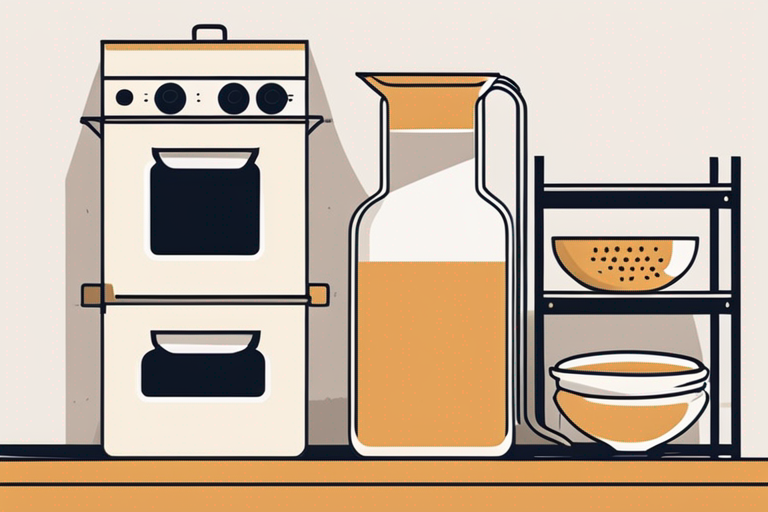
How to Preserve Cooked Barley for Future Use Without Spoiling
Get Your Free Food Safety Cheat Sheet
30 most common foods with instant answers. Print it and stick it on your fridge—completely free!
How to Preserve Cooked Barley for Future Use Without Spoiling
Cooked barley is a nutritious and versatile ingredient that can be used in a variety of dishes, from salads to soups. However, if you have cooked a large batch of barley and want to preserve it for future use, it's important to store it properly to prevent spoilage and maintain its quality. In this blog post, we will discuss the best methods for preserving cooked barley so that you can enjoy its benefits for longer periods. (Cooked barley)
Why Preserve Cooked Barley?
Before we delve into the preservation methods, let's understand why it's essential to preserve cooked barley properly:
- Prevent Waste: By preserving cooked barley correctly, you can avoid wasting food and save money in the long run.
- Convenience: Having pre-cooked barley on hand makes meal preparation quicker and more convenient.
- Nutritional Value: Proper storage helps retain the nutritional content of barley, such as fiber, vitamins, and minerals.
Storage Tips for Cooked Barley
Refrigeration
Refrigeration is one of the most common methods for preserving cooked barley in the short term. Follow these steps to store cooked barley in the refrigerator:
- Cooling: Allow the cooked barley to cool to room temperature before refrigerating it. Placing hot food in the fridge can raise its internal temperature, potentially leading to bacterial growth.
- Airtight Container: Transfer the barley to an airtight container or resealable bag to prevent moisture loss and absorption of odors from other foods.
- Labeling: Don't forget to label the container with the date of preparation to keep track of its freshness.
- Placement: Store the cooked barley in the refrigerator at a temperature below 40°F (4°C) to maintain its quality.
Freezing
Freezing cooked barley is an excellent option for long-term preservation. Here's how you can freeze cooked barley effectively:
- Portioning: Divide the cooked barley into smaller portions that you are likely to use in one go to avoid thawing and refreezing.
- Freezer Bags: Place the portions of barley in freezer-safe bags, removing excess air before sealing.
- Flat Freezing: Flatten the bags to create a thin layer of barley for quicker freezing and easier storage.
- Labeling and Date: Label the bags with the date of freezing and use them within 3-6 months for the best quality.
Dehydration
Dehydrating cooked barley is another preservation method that can extend its shelf life. Follow these steps to dehydrate cooked barley:
- Spread Thinly: Spread the cooked barley in a thin layer on a dehydrator tray to ensure even drying.
- Dehydration Process: Follow the manufacturer's instructions for dehydrating barley until it becomes dry and crisp.
- Storage Container: Store the dehydrated barley in an airtight container in a cool, dark place to maintain its quality.
- Rehydration: To use dehydrated barley, soak it in water or broth until it rehydrates before incorporating it into dishes.
Safety Precautions
When preserving cooked barley or any food, it's crucial to follow safety guidelines to prevent foodborne illnesses. Here are some safety precautions to keep in mind:
- Temperature Control: Maintain proper temperature control during storage to inhibit bacterial growth.
- Hygiene: Wash your hands thoroughly before handling cooked barley and use clean utensils and containers.
- Thawing: Thaw frozen barley in the refrigerator or microwave, avoiding leaving it at room temperature for extended periods.
- Inspect Before Use: Check the appearance, smell, and texture of preserved barley before consuming it to ensure it's safe to eat.
Conclusion
Preserving cooked barley allows you to enjoy this nutritious ingredient in various dishes while minimizing food waste. Whether you choose to refrigerate, freeze, or dehydrate cooked barley, following the proper storage methods is key to maintaining its quality and safety for future use. By incorporating these preservation techniques into your meal preparation routine, you can make the most of cooked barley's benefits without the risk of spoilage. Enjoy the versatility and health benefits of [cooked barley](/food/cooked barley) by storing it correctly for later use. (Cooked barley)

Authoritative Food Safety References
These agencies and university labs inform every tip and health precaution we publish.
USDA FoodKeeper – Cold Storage Guidelines
Official refrigerator, freezer, and pantry timelines maintained by the U.S. Department of Agriculture.
Visit USDA FoodKeeperFDA Produce Safety Rule & Grower Guidance
Field-to-fridge handling practices that prevent contamination of fruits, vegetables, and leafy greens.
Visit FDA Produce SafetyCDC Foodborne Illness Prevention Hub
Surveillance-backed guidance on pathogens, symptoms, and steps to reduce foodborne illness risk.
Visit CDC Food SafetyUC Davis Postharvest Technology Center
University research detailing optimal storage atmospheres for produce after harvest.
Visit UC Davis PostharvestPenn State Extension – Home Food Preservation & Safety
Peer-reviewed extension bulletins on safe canning, chilling, and reheating practices.
Visit Penn State ExtensionCan cooked barley be frozen for future use?
How should cooked barley be reheated?
Can cooked barley be preserved without refrigeration?
How can I tell if cooked barley has gone bad?
Get Your Free Food Safety Cheat Sheet
30 most common foods with instant answers. Print it and stick it on your fridge—completely free! Want more? Upgrade to the complete guide with 70+ foods.
Scan your food directly and get instant safety info using our AI-powered camera feature.